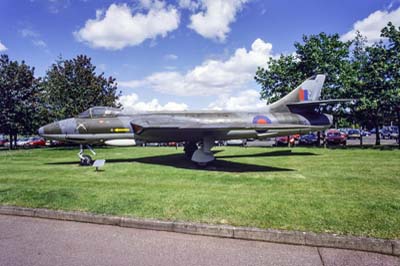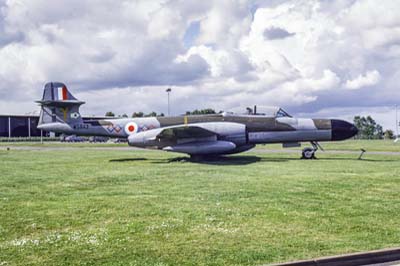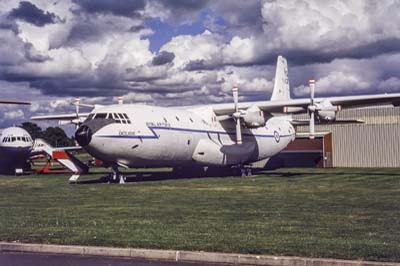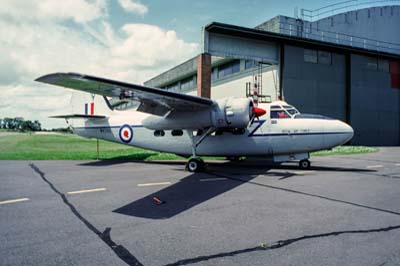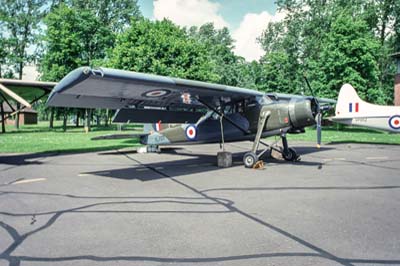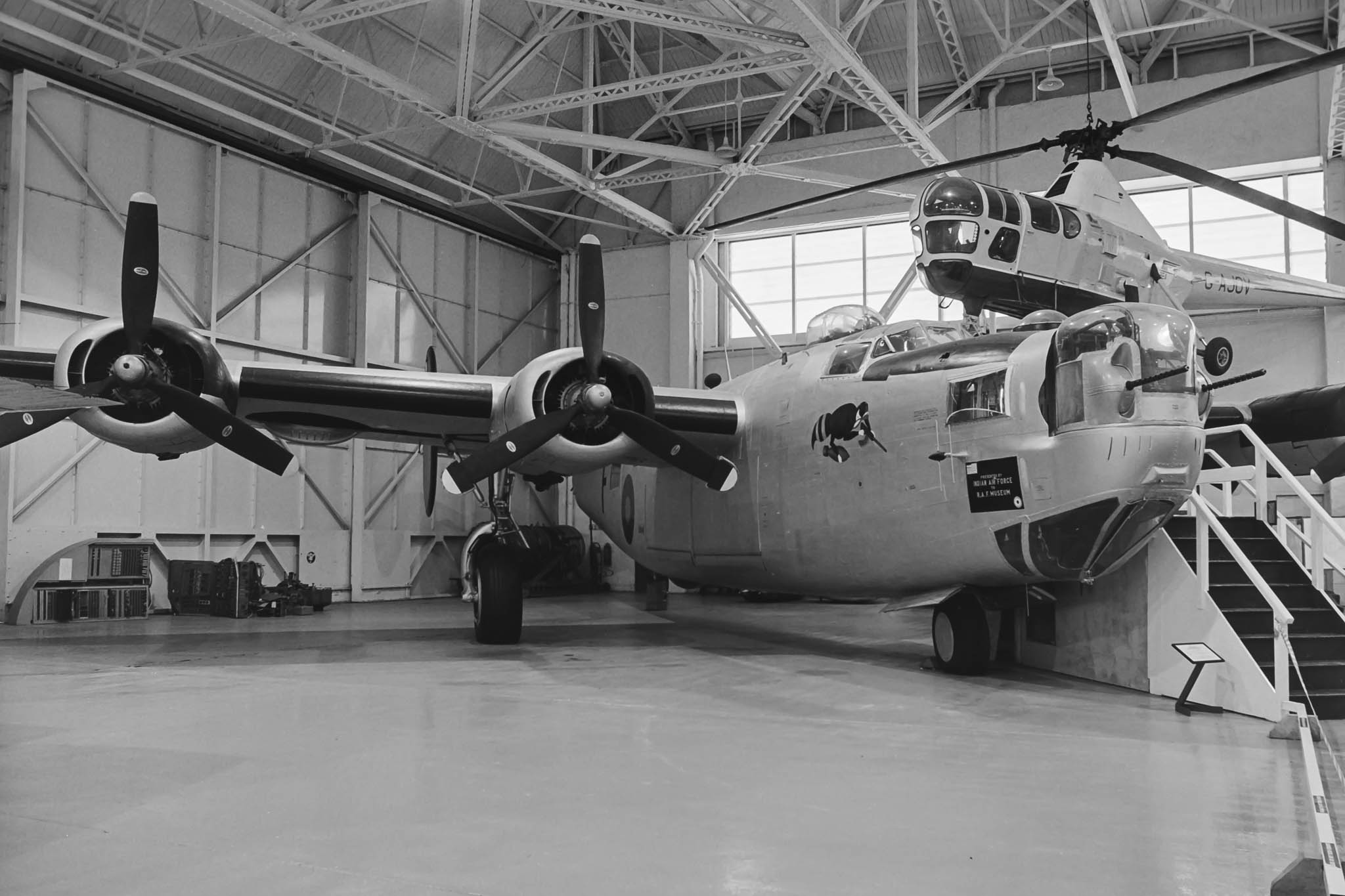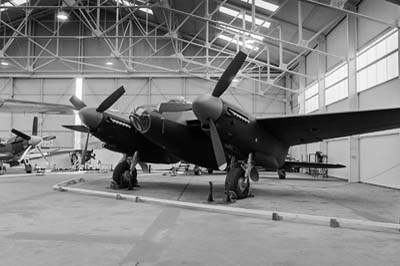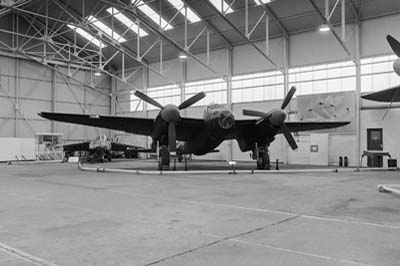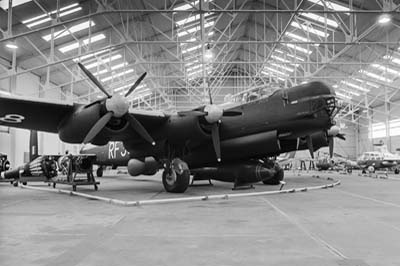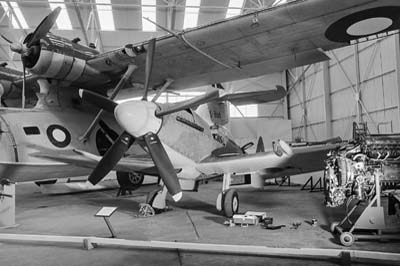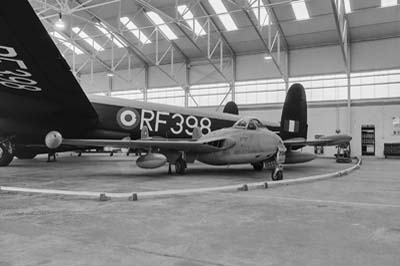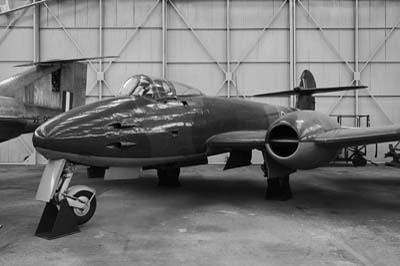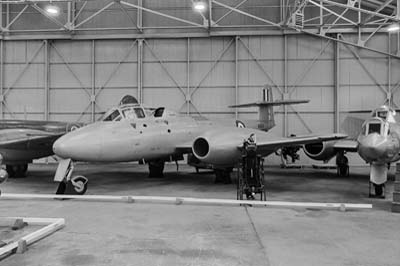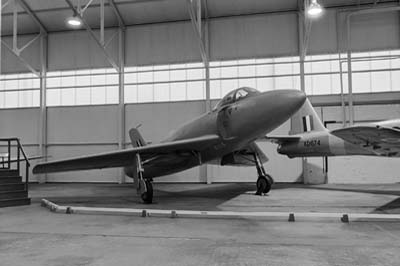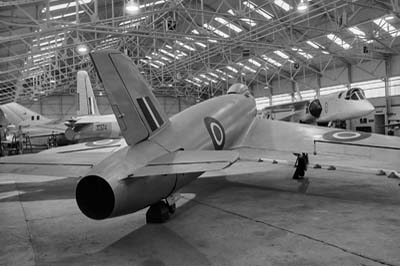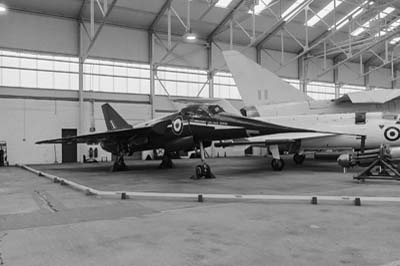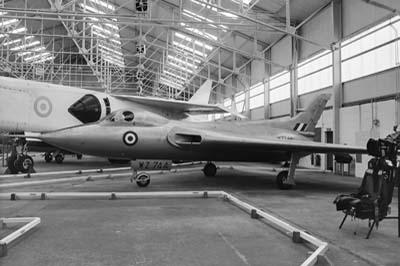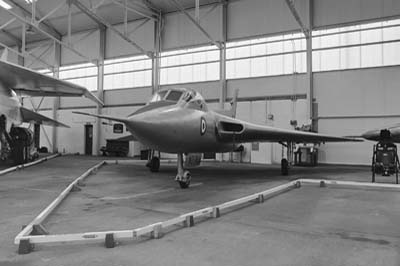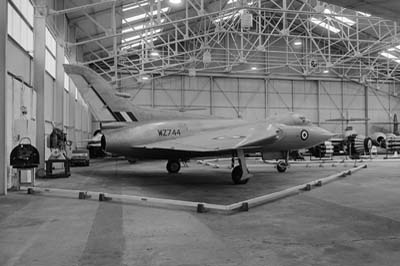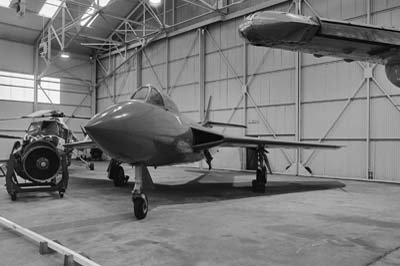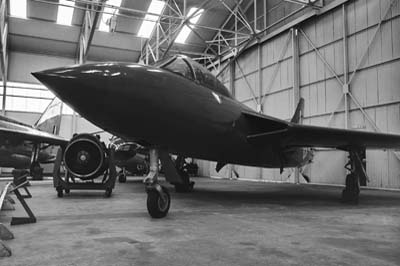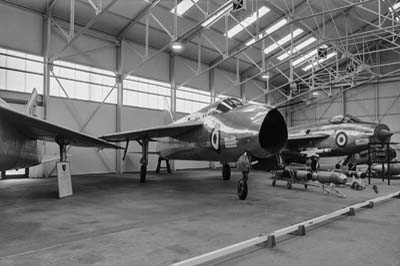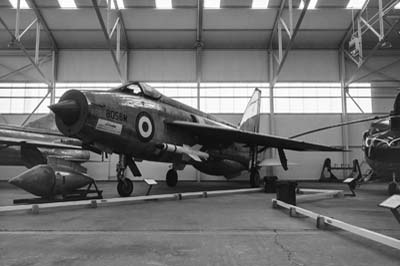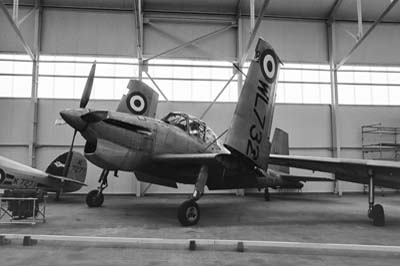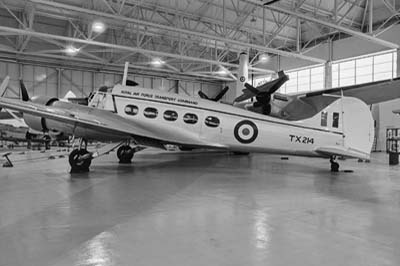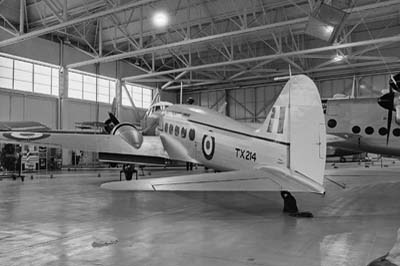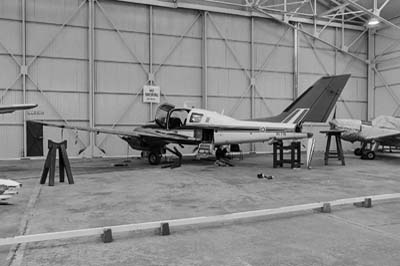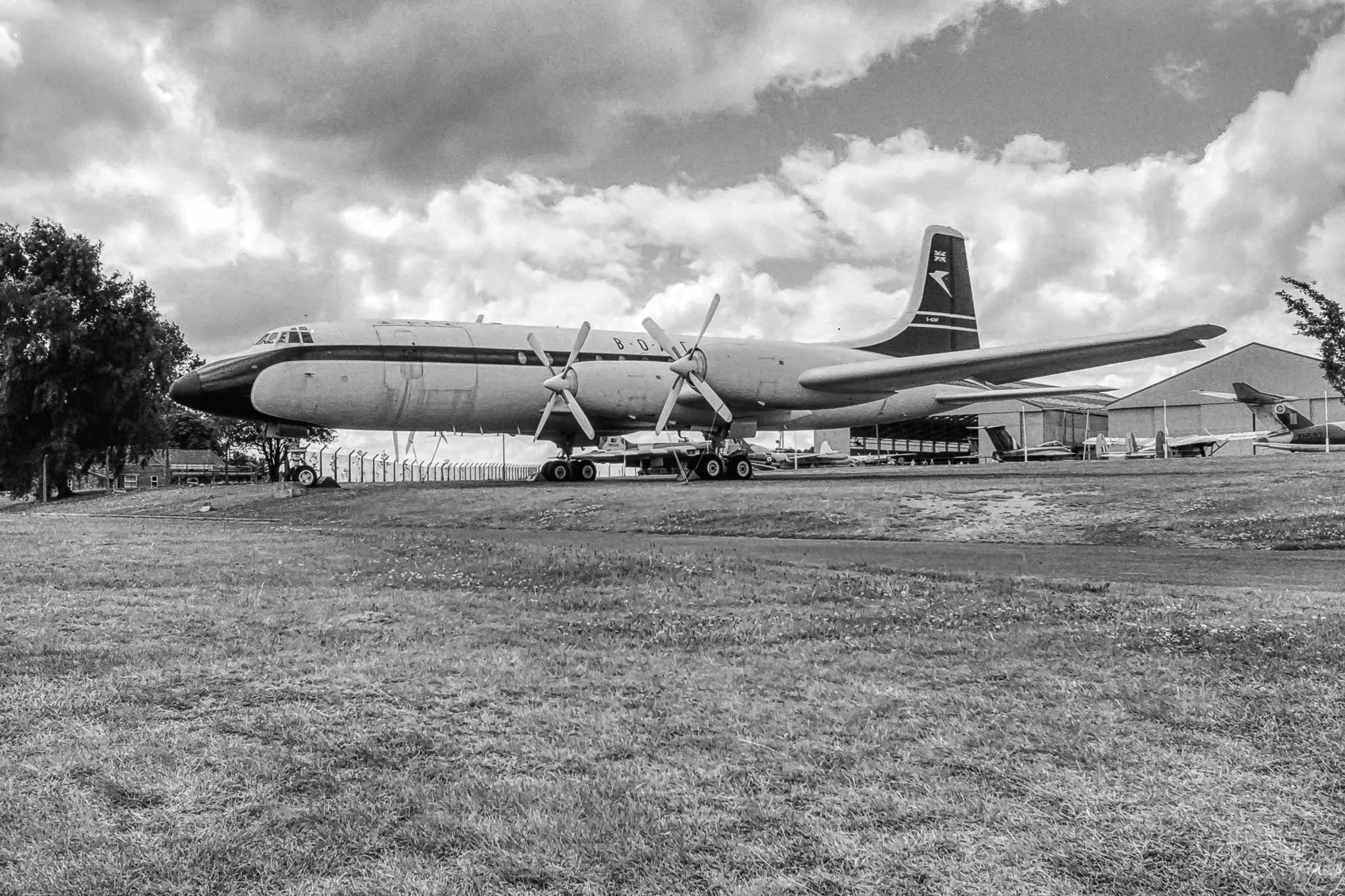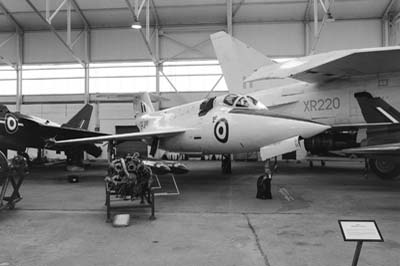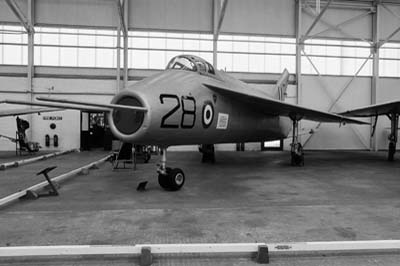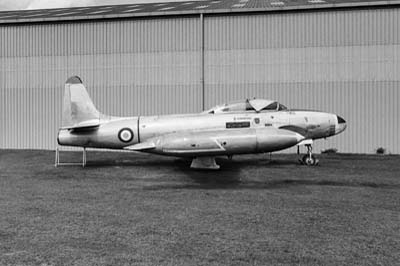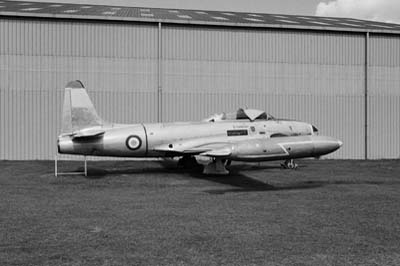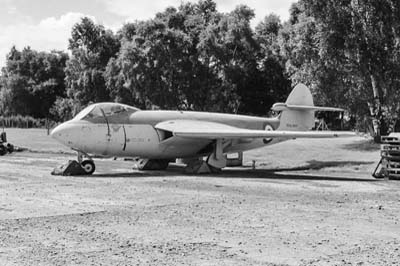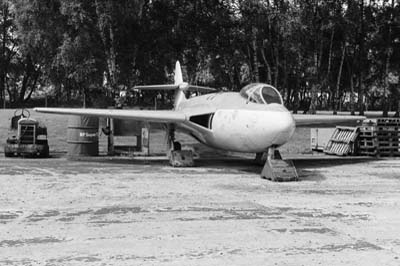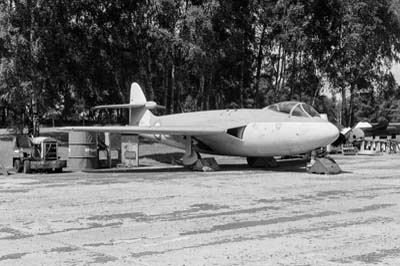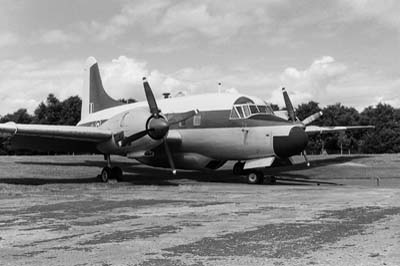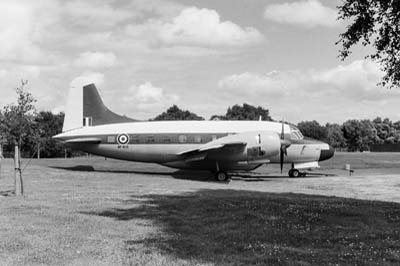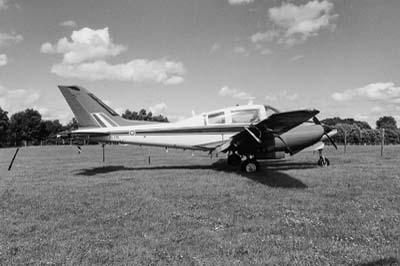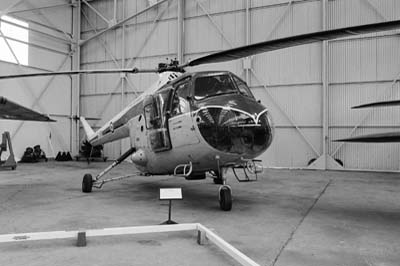Royal Air Force Museum
RAF Cosford
July 1988, January 1989, June 1993 and May 2002
Looking Back (Film and slide scans)
|
Left to right:
Hawker Siddeley Hunter F.6A (XG225).
Armstrong Whitworth (Gloster) Meteor NF.14 (WS843 'Y').
Short Brothers Belfast (XR371). Designed as a long-range, strategic transport aircraft the first flight was made in January 1964. Only ten aircraft were built serving around the World with the RAF until 1976. |
Left to right:
Scottish Aviation Twin Pioneer CC.2 (XL993). The Twin Pioneer was a follow-up to the same company's single-engine short take-off and landing (STOL) transport, the Pioneer. Initially designed as a 16-passenger civil transport aircraft the Twin Pioneer first flew in 1955. The RAF ordered 39 examples which entered service in October 1958 the last aircraft on frontline duties was retired in 1968. In 1965 an additional aircraft was acquired for use by the Empire Test Pilots School.
de Havilland Devon C.1 (VP952 later 8820M) was designed for the RAF from the civil de Havilland Dove 4 as a light communications and transport aircraft supplied from 1947, serving till 1984 VP952 it was donated to the museum in 1998. On August 7, 2025 it arrived at its new home, Gatwick Aviation Museum.
Hunting Percival Pembroke C.1 (WV746). Entering service in 1953, the Pembroke took over from the venerable Anson in the light transport and communications role.
Scottish Aviation Pioneer CC.1 (XL703). The prototype first flew in 1947 with deliveries to the RAF starting in 1953. Only a small number were built mostly served in the Far East. XL703 is the sole serviving example which was delivered to the RAF in 1956, only two more followed before production ended. In 1968 it was retired and delivered to Cosford for preservation, going on display in 1989. |
Consolidated B-24L Liberator VI (KN751 later with Indian Air Force as HE807).
In 1976 it was put on display at Cosford, where it stayed until it was moved to Hendon in 2005. |
Left to right:
de Havilland Mosquito TT.35 (TA639 'AZ-E') was delivered at the close of the World War Two and went into storage till 1952 when it was converted to a target tug and served as such until 1963. It was put into storage at Cosford where later in 1988 it was repainted.
Avro 694 Lincoln B.II (RF398 later 8376M). Designed as a long-range bomber to supersede the Lancaster, the first Lincoln flew in 1944, but production did not get underway until the war had ended. 583 were built but with the introduction of jet-fighters their effectiveness was lost and they were withdrawn from frontline service in 1955. The example on show was used for Radar development trials until 1963. It was moved to Cosford in 1968 for storage and later put on display.
Supermarine Spitfire Mk.XIV (MT847 'XA-H'), re-painted by 1991. It was put on display at Manchester Air & Space museum from 1995 to 2014 before going on to Pima in 2017. As photographed at Pima Air Museum, Tucson, Arizona in 2019. |
Left to right:
de Havilland DH-112 Venom FB.54 (J-1704) ex Swiss Air Force. The first Venom prototype flew on September 2, 1949. It served with the Royal Air Force as a single-seat fighter-bomber and two-seat night fighter. The 22 FB.54s built were purchased by Venezuela and Switzerland in the 1950s.
Gloster F.9/40 Meteor Prototype (DG202/G later 5758M). This is one of eight Meteor prototypes ordered by the Ministry of Aircraft in February 1941. It was built by Glosters at Brockworth by Autumn 1941. Following ground running tests it attempted to take to the air in July 1942, but was beaten by sister aircraft DG206 to a first flight. Its actual first flight took place in July 1943. Trials continued until 1945 including deck landings before it was put into storage with Glosters at Moreton Valance and was later allotted the instructional serial 5758M with School of Aeronautical Engineering (Officers) at RAF Henlow at the end of 1945. There it was used for ground training until it was transferred to the main gate at RAF Yatesbury in 1958. In 1965 after a period of storage it moved to RAF Cosford where it remained until its transfer to RAFM Hendon in September 2011. DG202 had returned into storage in Lamella Hangar 9 at Cosford by February 2018.
Gloster T.7 (mod) Meteor (WA634). Delivered in 1949 it was utilised by Aeroplane and Armament Experimental Establishment for tropical cockpit cooling trials from 1951. In 1952 it was with Martin Baker Aircraft for ejection seat trials, including the first live ground level ejection in 1955. Moved to St Athan in 1974 and to Cosford in 1986. It was put in store from 2015 iin Hangar 9 at RAF Cosford before its move to the Ulster Aviation Society in December in 2022. |
Left to right:
Supermarine 510 (VV106). First flight and trials from Boscombe Down in 1948 before modified for naval use in 1950. Final flight in 1955 and moved to 1 SOTT at RAF Halton. Moved to RAF Cardington, RAF Colerne and RAF St Athan before its move to Cosford in 1977. In 1990 it was moved to the FAAM stores at RNAS Lee on Solent and later RNAS Wroughton and then Cobham Hall - RNAS Yeovilton. As photographed at Cobham Hall in 2005.
Hunting Jet Provost T.1 (XD674 later 7570M).
Fairey Delta 2 or FD.2 (WG777). This is the second of the only two aircraft built. It was designed as an advanced supersonic all weather interceptor and uniquely at the time had a nose which could droop to improve visibility during landing. It first flew in 1954 and eventually broke the world speed record on March 10, 1956 with a speed of 1,132 mph (1,811 km/h) some 300 mph faster than the existing holder from the year before, a F-100 Super Sabre. Flight testing continued until 1966 when it was retired to RAE Bedford for storage, eventually arriving at Cosford in 1973. |
Left to right:
Avro 707C (WZ744). The Avro 707 was designed for research purposes with the intention of eventually using them as jet trainers, to provide pilots with experience of handling a delta-winged aircraft using fly-by-wire technology in advance of the introduction of the Avro Vulcan. The one-third scale design was the first British built delta-winged aircraft. WZ744 first flew on July 1, 1953 from RAF Waddington eventually totalling 200 hours testing fly-by-wire electrically signalled hydraulic flying controls, it was retired in 1967. |
Left to right:
Hawker P.1067 Hunter F3 (WB188). Hunter prototype flown by Neville Duke the to achieve the world air speed record of 727.63mph on September 7, 1953, taking off from Tangmere and flying a route between Bognor and Littlehampton. Retired as an instructional airframe at RAF Halton before moving to Melksham, Abingdon and Colern. In 1975 it was transferred to Cosford but put on loan to Tangmere Military Aviation Museum in 1992.
English Electric P.1A (WG760). Leading to the design of the Lightning the English Electric P.1 was built to an Air Ministry specification from 1947. The main purpose was to test low-speed handling characteristics of the revolutionary swept wing. The P.1A's maiden flight was in August 1954 from Boscombe Down. Handling was good with the aircraft achieved Mach 1 seven days later. WG760 was later fitted with an afterburner and achieved a speed of Mach 1.53 in January 1956.
Lightning F.1 (XG337 later 8056M) first flew in September 1959 it was used for Red Top missile trials at Warton and Boscombe Down. Utilised for ground instructional use at Cosford and Halton before returning to Cosford for display, eventually to be hung vertically from the roof of the new Cold War Exhibition building. |
Left to right:
Boulton Paul Sea Balliol T.21 (WL732) Developed as an advanced trainer aircraft for the RAF (Balliol) and the Royal Navy Fleet Air Arm (Sea Balliol) in the late 1940s. 30 were supplied to the FAA from 1954 and served until 1963.
Avro Anson C.19 (TX214). Delivered in 1946, TX214 was struck off charge on the in 1963 it was transferred to the Historical Aircraft Museum at RAF Henlow and then on to RAF Cosford Museum in 1978. In May 2025 it was transferred to the Avro Heritage Museum in Woodford, Greater Manchester.
Beagle Basset CC.1 (XS770 registered G-HRHI). Built in 1965 it was used by Northern Communications Squadron at RAF Wyton and 32 Squadron at RAF Northolt. Moved to Cosford in 1986. |
| Bristol 175 Britannia 312F (G-AOVF). The Britannia was designed as a medium to long-range airliner. Powered by four turbo-prop engines it was nicknamed the 'whispering giant'. The aircraft on display was ordered by BOAC and later flew with British Eagle, Donaldson, IAS and Invicta. |
Left to right:
Saunders Roe SR.53 (XD145) it was designed as a prototype interceptor aircraft using both jet and rocket power, it first flew in 1957. Two were built but the project was cancelled after just 42 flights and after XD151 had crashed in June 1958. It was moved to Henlow in 1969 and to Brize Norton for restoration in 1978 and on to Cosford in 1982.
Short SB.5 (WG768 '28' later 8005M). A research aircraft designed by Short Brothers under UK Air Ministry requirement ER.100, to provide input for the design of the English Electric P.1, the prototype for the English Electric Lightning. Struck off charge in 1967. The '28' Code is from the Empire Test Pilots School.
Lockheed T-33A Shooting Star (51-17473). To France in 1954 as '17473' returned to Sculthorpe in 1978 and moved to Cosford for storage until 1993. To Midland Air Museum, Coventry painted in Italian Air Force colours. |
Left to right:
Hawker P.1052 (VX272 later 7174M). First flight from Boscombe Down in 1948 with trials flown later from RAE Farnborough. Used for arresting and deck landing trials on HMS Eagle, also fitted with Sea Hawk under carriage. To 1 SoTT at RAF Halton and on to RAF Cardington, RAF Colerne and RAF St Athan before its move to Cosford in 1977. In 1990 it was moved on loan to the FAAM storage at RNAS Lee on Solent and later at RNAS Wroughton and then Cobham Hall - RNAS Yeovilton in 1999. |
Left to right:
Vickers Varsity T.1 (WF408 later 8395M) built in 1952. By 2009 the cockpit only had been moved to the Ashford, Kent area.
Beagle Basset CC1 (XS770 registered G-HRHI). Built in 1965 it was used by Northern Communications Squadron at RAF Wyton and 32 Squadron at RAF Northolt. Moved to Cosford in 1986.
Bristol 171 Sycamore HR.14 (XJ918 later 8190M). The Bristol Sycamore is one of the first production helicopters to be developed. XJ918 was relocated to the RAF Museum Cosford in 1983. |
